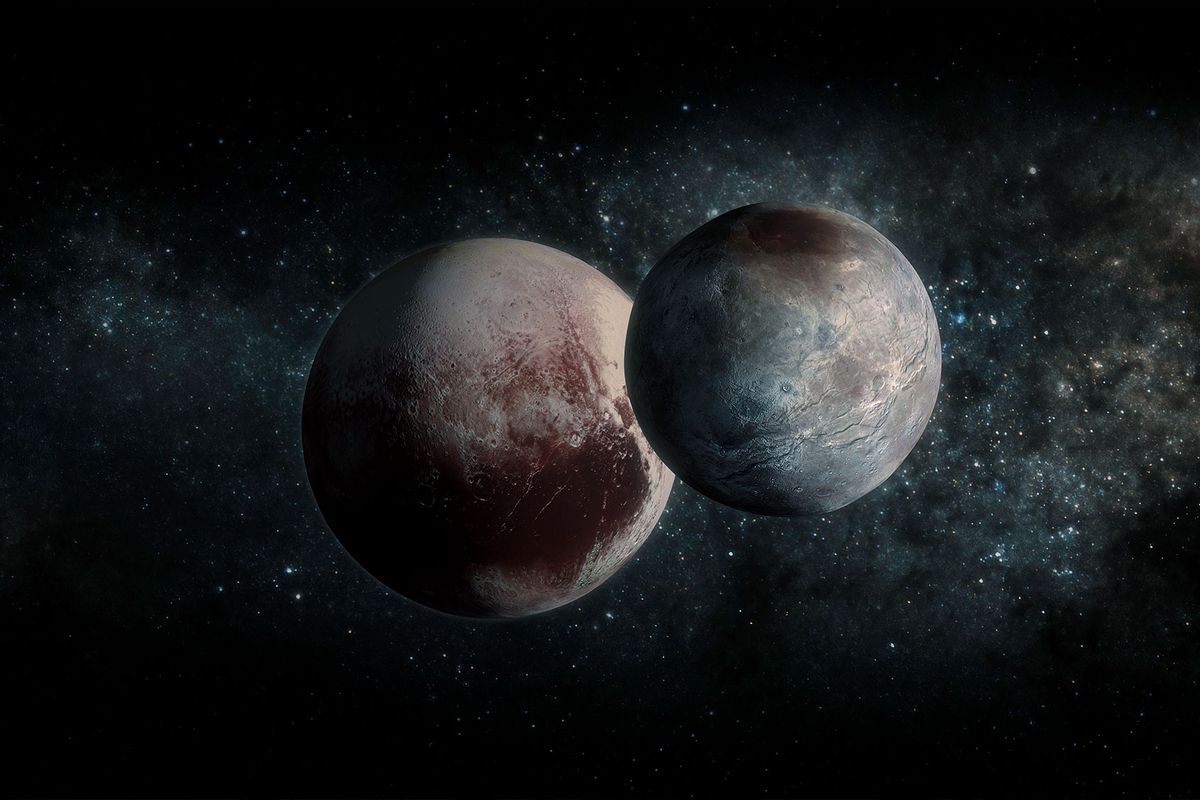Pluto, considered the ninth planet in our solar system until it was reclassified to dwarf planet status in 2006, is thought to have undergone an impact that broke off the largest of its five moons, Charon. Because Charon is just over half the size of Pluto, the two bodies then began orbiting each other in a cosmic dance in the Kuiper Belt beyond Neptune’s orbit.
However, a recent study in Nature Geoscience suggests a different origin story for Charon. Using simulations that took into account parameters like the size and composition of the bodies, along with the strength at which they collided, researchers reported that in the early stages of formation Charon and Pluto came together and orbited as one, swapping some materials before separating. They call this cosmic dance a “kiss and capture” event, which could indicate Charon and Pluto are roughly the same age.
“Because Pluto is rotating rapidly prior to the collision, and because Charon lies mostly outside of their corotation zone, it is able to ‘push’ Charon off, and Charon starts to slowly migrate out,” first author Dr. Adeene Denton, a planetary scientist from the University of Arizona, told The Guardian.
Denton’s team plans to conduct future research that examines how this formation impacted Pluto’s evolution and how the force of the tides on Pluto changed as a result of the separation. Additionally, 80% of the largest objects in the Kuiper Belt have a large object rotating them like the Pluto-Charon dynamic, and "kiss and capture" events could have occurred in this region in other places, too.
"We're particularly interested in understanding how this initial configuration affects Pluto's geological evolution," Denton said in a press release. "The heat from the impact and subsequent tidal forces could have played a crucial role in shaping the features we see on Pluto's surface today."



Shares